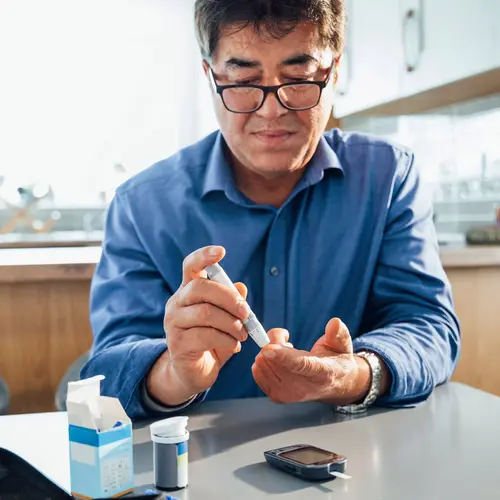If you have atrial fibrillation (AFib), you may not need any treatment, or you may be able to manage it with medication. But this condition is almost always progressive and often needs lifelong therapy. In the beginning, your AFib episodes might be more spaced out and less intense. But over time the problem can become worse and it can happen more often.
If you have ongoing symptoms for more than 1 week, this is called persistent AFib. When your heart rhythm can’t be restored it’s called permanent AFib.
You may find your medicine isn’t helping anymore or medicine might stop working all together. This usually means you need to change your treatment path.
How to Tell if AFib Is Getting Worse
Your AFib treatment should help control your heart rate, rhythm, and prevent blood clots. If you notice that your AFib episodes happen more often, last longer, or your medication doesn’t help as much, your condition is probably getting worse.
As AFib progresses, you might notice some signs. You might feel more weak, tired, lightheaded, and anxious about the condition.
You Might Need to Change Some Habits
Your doctor might refer you to a cardiac rehabilitation program. The goal of rehab is to give you the tools you need to make and keep healthy choices. You’ll work with a care team of cardiologists, nurses, nutritionists, exercise specialists, mental health experts, and physical or occupational therapists. They’ll observe your physical, medical, and mental needs so they can give you the best support, exercise tips, and lifestyle suggestions.
Adding healthy habits to your life can help improve your AFib symptoms. Some important lifestyle changes include:
- Getting regular physical activity
- Controlling your high blood pressure
- Eating a heart-healthy diet, which is low in cholesterol, saturated fats, trans fats, and salt
- Quitting smoking
- Managing your cholesterol
- Keeping a healthy weight
- Staying away from too much caffeine or alcohol
Your Medications May Change
AFib medications have two goals: to control AFib symptoms and to prevent strokes. For them to work the way they should, you need to always take the medication.
Talk to your doctor. If you have trouble staying on track with your medications, they may be able to make an adjustment that you’re better able to stay on top of.
If your medication still doesn’t seem to help your AFib, your doctor may suggest you adjust your medications. If so, you’ll need to follow directions on changing the drugs, and then see if symptoms get better. If they don’t, you’ll need to look at other treatment options to manage your condition.
You Might Need a Procedure
When medications aren’t enough, there are other treatment options that can help your heart restore a normal rhythm. Your doctor might suggest:
Cardioversion. A cardioversion procedure can reset your heart back to its normal rhythm. There are two types:
- Electrical cardioversion. Your doctor will give your heart an electrical shock through paddles or patches on your chest. This stops your heart for a quick instant so that it can reset. This procedure happens in a hospital and you’ll take general anesthesia before.
- Cardioversion with drugs. Your doctor will give you anti-arrhythmic drugs to restore your heart rhythm. Based on your heart condition, you’ll either get these drugs through a vein (intravenous or IV) or in pills that you swallow. This procedure also usually happens in a hospital.
Pacemaker . These devices help prevent your heart rate from becoming too slow. They send impulses to stimulate your heartbeat. Your doctor will implant one of these devices near your heart or abdomen, under your skin.
Your doctor will implant your pacemaker or defibrillator while you’re sedated, so you won’t feel any pain during the procedure.
Cardiac Ablation. Doctors do this procedure in a hospital to fix an abnormal heart rhythm. A cardiac ablation works by scarring tissue in your heart to stop faulty electrical signals caused by your AFib. This usually improves symptoms of AFib like fatigue and shortness of breath. There are three types:
- Catheter ablation. This is the most common type of cardiac ablation. Your doctor will put long, thin tubes (catheters) through a vein and into your heart. Then, they’ll apply extreme heat or cold to cause small scars.
- Maze procedure. This type of ablation is done during open-heart surgery. Your doctor will use cuts, extreme cold, or radiofrequency to create a maze pattern of scar tissue in the upper chambers of your heart. This could be a good option if you’re already having heart surgery for a different condition. You’ll get general anesthesia and might also get a sedative beforehand to help you relax.
- AV node ablation. Atrioventricular (AV) node ablation is an inpatient procedure that uses catheters to make scars in the AV node. This part of your heart connects the upper and lower chambers. After this, you’ll need to use a pacemaker to keep a normal heart rhythm.
Left Atrial Appendage Closure. The left atrial appendage (LAA) is a small area in your heart’s left atrium. AFib can lead to blood clots, which can settle in the area. This can cause serious issues like a stroke. A left atrial appendage closure will close off your LAA to keep clots from escaping. This will lower your risk of stroke. Your doctor might use a Watchman, an AtriClip, an Amplatzer plug, or a LARIAT device to close your LAA.

